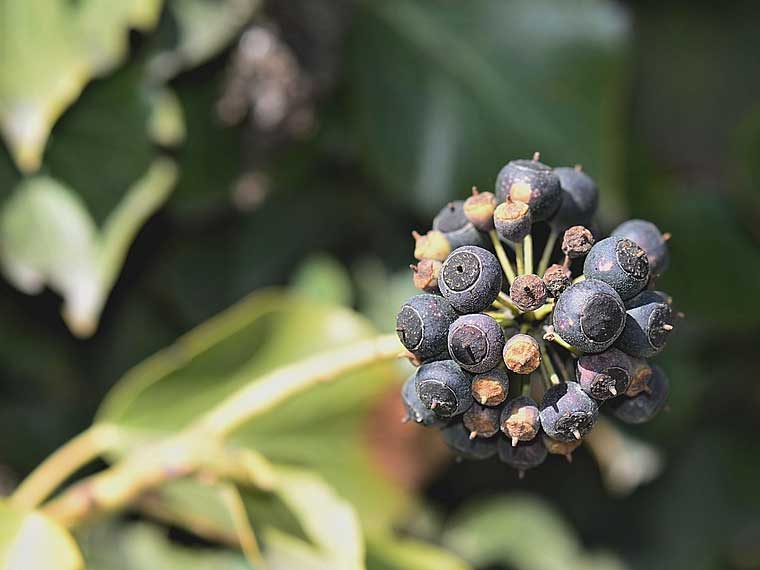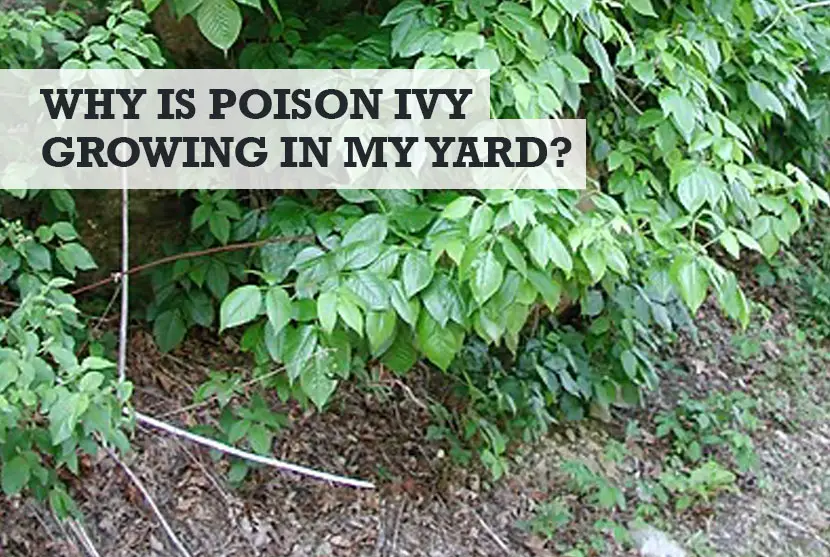Most people consider poison ivy to be an unwelcome weed, and I count myself in that number. It’s invasive, can ruin the look of your backyard, and if touched can result in a painful rash… but just why does poison ivy grow in your yard?
Poison ivy can appear to grow out of nowhere, and there’s a very good reason why you have so much poison ivy in your yard or garden.
Poison ivy will grow in your yard from seeds. The seeds in your backyard might have been spread there by birds or other animals that eat the small poison ivy fruits and bring it into your yard. Poison ivy can grow very quickly, and then starts to propagate itself.
Now you know how poison ivy gets in your yard, you can take steps to prevent it growing and spreading. I’ve written up some tips below.
How do you stop poison ivy from spreading in your yard?
To stop poison ivy spreading in your yard after you’ve killed it off, you need to make sure that you’ve dealt with the root system so it doesn’t come back.
Wearing gloves, prune the stems down. Don’t rip and tear at them, as this can release the painful urushiol into the air and might get on your skin causing a reaction or rash.
Once the poison ivy plants have been cut down, dig down about 8 inches to ensure you dig out all the roots. This should stop it spreading in your yard and growing back next year.

There are some more tips on getting rid of poison ivy growing in your yard further down the page, plus ideas on what not to do, which could make it worse.
Does mowing poison ivy spread it?
Mowing poison ivy can spread it across your yard if you are mowing when the berries are in fruit. These have the seeds in, so if you are mowing them and spreading them across the lawn, it’s possible that that poison ivy will grow in your yard even more than before.
Another reason to not mow poison ivy is that the leaves and stems can be spread across the grass. If the plant still has the urushiol on it (the stuff that gives you a rash), then people can come into contact with it more if using the yard for leisure.
Handy Hint: Mowing will spread mushrooms around your yard and lawn, so you need to take a different approach instead to culling backyard mushrooms.
How to get rid of poison ivy growing in my yard?
I’ve already touched up on how to stop poison ivy spreading in your yard, but you can go further and be more comprehensive in your approach.
If the poison ivy is growing up trees in your yard, you need to stop the ivy roots getting moisture from the soil at the base of the tree. You can do this by cutting the vines.
Once the vine is cut, apply a herbicide, also known as a brush killer (view on Amazon), to the freshly cut end. Take care to protect any plants in the vicinity that you don’t wish to kill off.
However, the roots will still be in the soil, so it could grow back if the herbicide doesn’t work. Give it a few weeks, and if no luck, dig the roots out as well, to about 8 inches deep.
Make sure that you get the poison ivy cuttings and waste that you generate as far away from your yard as possible, so seeds don’t propagate again.
How can I get rid of poison ivy overnight?
The only way you can get rid of poison ivy from your yard overnight is to work hard. Cut the stems down, then dig the roots out.
Don’t burn the wastage, the fumes might be dangerous if inhaled.
Is poison ivy in your backyard dangerous for humans?
Don’t let the work “poison” frighten you. Whilst backyard poison ivy can give you a bad reaction, it should not cause any serious or long-term harm.
Poison ivy is a toxic and allergenic plant which contains an oil called urushiol. When your skin comes into contact with the plant, the ivy releases tiny chemicals. These bind to skin proteins in your body.
Your antigen-presenting cells (APCs) then react to that protein with the poison ivy chemical in it because it thinks your body is “under attack” from a foreign substance. Your APCs then signal to your body’s lymph nodes that there’s a problem, which in turn activate T cells which form an “army” that rushes back to the skin to check the incoming “invasion”.
The T cells will start releasing proteins called cytokines and chemokines which can get into your bloodstream. This is what leads to the allergic reaction where you suffer with itchiness and swelling.
What follows is a cascade of different cells in your body trying to fight the allergy off. Whilst it will work eventually, it can also lead to healthy cells in your body being killed. This can make your skin go red with fluid-filled blisters also appearing.
Between 10 to 15% of the population are resistant to this allergic reaction. Your reaction when coming into contact with poison ivy will vary depending on how resistant you are, and how much urushiol got into your skin.
Conclusion
You can never completely stop poison ivy from growing in your yard, because you can never stop birds and critters from getting on your land… they are the ones who are most likely bringing it onto your property in the seed form.
However, the good news is that you can get rid of poison ivy growing in my yard relatively easy, and take steps to make sure it doesn’t grow back again.
More backyard guides …
- Why you small holes are appearing in your yard
- Why you have dead bees in your backyard
- Why moss is growing in your yard
Poison ivy image in header from https://commons.wikimedia.org/wiki/File:Poison_ivy-roadside.jpg


